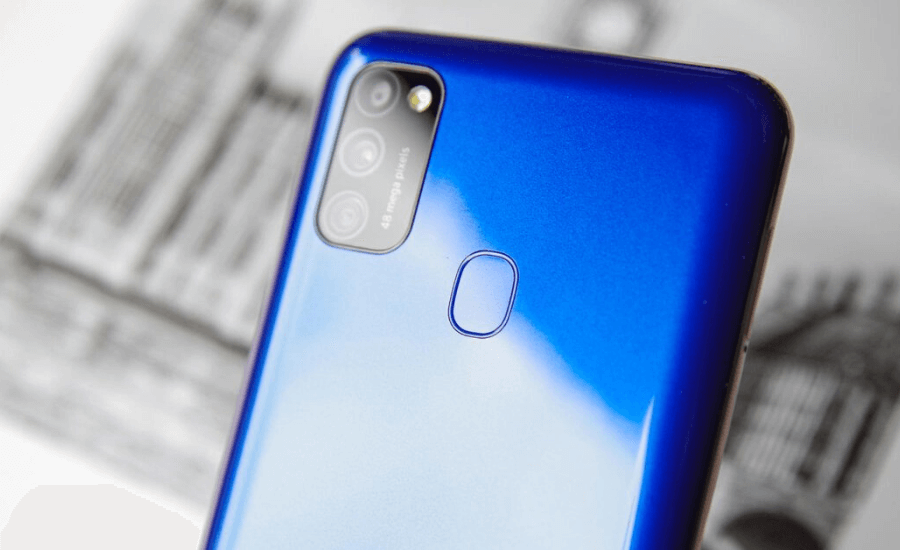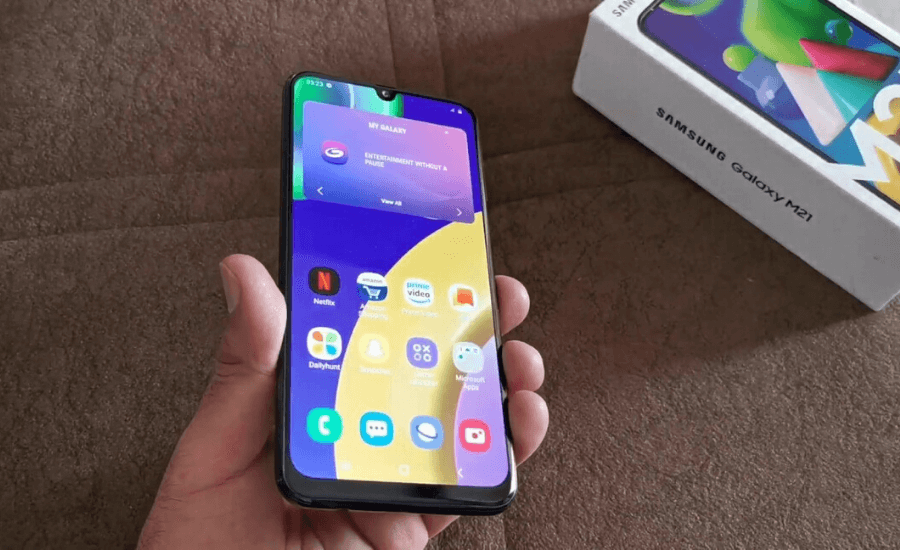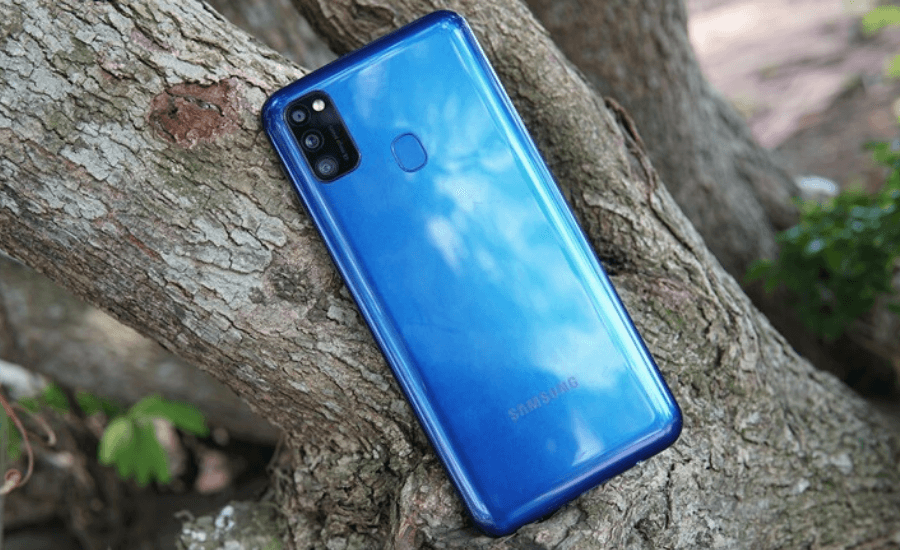A few months back, Samsung successfully made big-battery smartphones accessible with its M-series. But the mid-range is a tough segment to crack with the competition from the likes of Xiaomi and Realme.
Thanks to their popularity, The new Samsung Galaxy M21 smartphone shares a lot of hardware with some of its predecessors. But can it stand out? We put the Galaxy M21 to the test to find out.
Samsung Galaxy M21 Features and Specifications
Samsung has been making phones in the Galaxy M series out of plastic to keep costs down. The Galaxy M21 feels like it was designed with a tight budget in mind. The back panel is made out of plastic and has a glossy finish. It picks up fingerprints very easily.

Samsung does not provide a case in the box, so you’ll have to wipe the device often till you buy one yourself.
The Samsung Galaxy M21 is the successor of the Galaxy M20 but looks much more like the Galaxy M30 which was launched in mid-2019. However, it does not come in the same flashy colours and is available only in Blue and Black.
The Galaxy M21 has a big display that measures 6.4 inches and has thin bezels at the top and the sides. The chin is considerably thicker. At the top, it has a waterdrop notch that houses the selfie camera and a tiny earpiece right above it. You can reach the top of the display if you have big hands, else you’ll need to shuffle a little to reach the top.
Samsung offers a USB Type-C port at the bottom and a 15W charger in the box. The Galaxy M21 also has a 3.5mm headphone jack at the bottom along with the loudspeaker and the primary microphone.

The Samsung Galaxy M21 has a 6.4-inch AMOLED display with a Full-HD+ resolution. An AMOLED panel in this price range isn’t very common but Samsung has been steadily changing that with the Galaxy M series. This panel is vivid and has very good viewing angles.
Samsung has chosen the Exynos 9611 SoC yet again. It now powers the Galaxy M21, just like the Galaxy M31 and the Galaxy M30s. This is an octa-core processor with four performance ARM Cortex-A73 cores clocked at 2.3GHz and four efficiency Cortex-A53 cores clocked at 1.7GHz.
It also features integrated Mali-G72 graphics. The Galaxy M21 is offered in two variants, one with 4GB of RAM and 64GB of storage, and the other with 6GB of RAM and 128GB of storage.
The Samsung Galaxy M21 is a dual-SIM device and has two Nano-SIM slots. It also has a dedicated microSD card slot for storage expansion. There is support for dual 4G VoLTE, Bluetooth 5, dual-band Wi-Fi, and four satellite navigation systems. It packs in a 6,000mAh battery.

The Galaxy M21 runs One UI 2.0 on top of Android 10 which is the latest version of Android.
The Exynos 9611 is a capable processor and can take care of basic apps without any signs of slowing down. Multitasking was smooth and could switch between multiple apps without needing to wait for them to load all over again.
The fingerprint scanner at the back of the device is quick to unlock the device, and so is face recognition. The AMOLED display is the best part of the Galaxy M21.

Battery life for the Galaxy M21 is excellent. Thanks to the big 6,000mAh battery. The big battery takes over two hours to fill up. Using the supplied 15W charger, the device got to 21 percent in 30 minutes and got to 42 percent in an hour.
Samsung has gone with a triple camera setup on the Samsung Galaxy M21, and it is identical to what you get with the Galaxy M30s. The primary camera has a 48-megapixel sensor with an f/2.0 aperture.
There’s also an 8-megapixel ultra-wide-angle camera with an f/2.2 aperture and a 5-megapixel depth sensor. The camera UI is easy to use. It has a scene optimiser that can detect what the camera is pointed towards and set the phone up accordingly. Other than the regular photo and video modes, it has a Live Focus, Pro, Night, Food, Super Slow-Mo, and a few more.

The Samsung Galaxy M21 is quick to lock focus and meter light, but the scene optimiser isn’t as responsive.
The Samsung Galaxy M21 is priced at Rs. 14,999. The Galaxy M21 itself is just an average device at this price point. Competitors such as the Realme 6 and the Redmi Note 9 Pro offer much more impressive performance and better cameras at roughly the same price.
